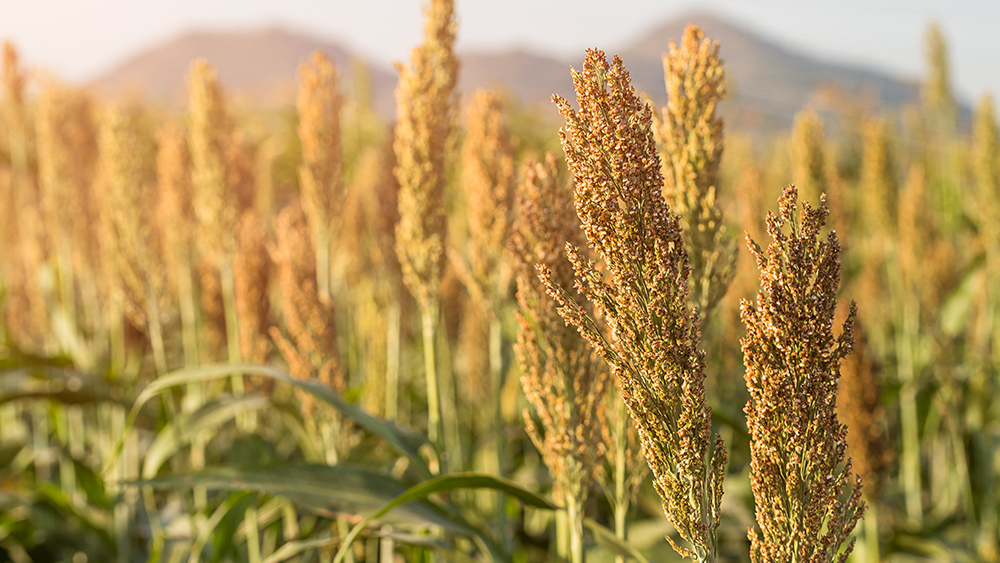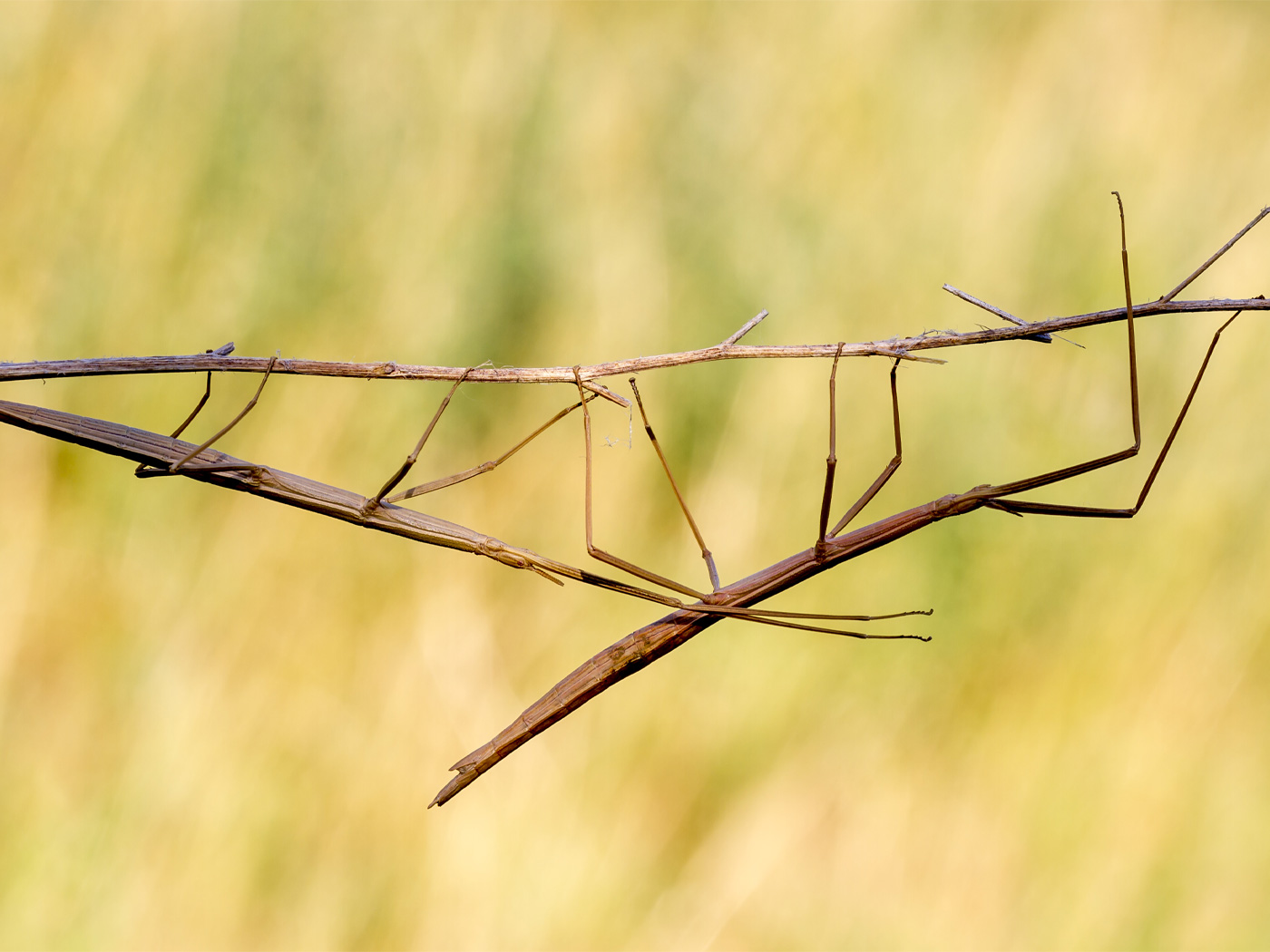Sorghum is an important food crop due, in part, to its extreme drought-tolerance. This characteristic makes it an ideal model for demonstrating how biological entities are able to continuously track environmental changes. A new study takes a big stride in revealing some mechanisms underlying drought tolerance. It shows that when water is scarce sorghum radically manipulates the expression of its photosynthesis-related genes and its relationship to the fungi on its roots.
Nelle Varoquaux and a large team working under the guidance of Elizabeth Purdom of the University of California, Berkeley, published their findings in the Proceedings of the National Academy of Sciences.1 In a field study lasting 17-weeks, they cultivated two sets of sorghum (Sorghum bicolor) reflecting two different genotypes and subjected them to pre-flowering and post-flowering drought stress. The team collected weekly samples of the leaves and roots. The researchers developed field procedures to rapidly freeze the samples. In their laboratory, they sequenced the messenger RNA (the products of active genes) to produce a dataset of nearly 400 transcriptomes (the plants’ RNA profile at the time of sampling). From there, they compiled a molecular profile of drought response over the growing season.
Remarkably, the researchers found,
A U.C. Berkeley press release coincided with the publication of the scientific results. It summarized the significance of their faculty’s research, saying, “A new study published this week in the journal Proceedings of the National Academy of Sciences provides the first detailed look at how the plant exercises exquisite control over its genome—switching some genes on and some genes off at the first sign of water scarcity” adding “the plant modulates the expression of a total of 10,727 genes….”2
What these researchers didn’t report on are the adaptive system elements within sorghum that enable it to exercise exquisite control over its genome—system elements that are identical to human-engineered systems performing similar functions. It’s evident that sorghum are specifically equipped with sensors that detect drought. In addition, innate exquisite control indicates the presence of innate logical algorithms to govern and regulate responses that result in a targeted—not random—expression of just the right genes.
Drought adaptation by sorghum is not confined to tuning the expression of its traits. As ICR has previously reported, sorghum plants don’t adjust to drought conditions in isolation. The sorghum responds in conjunction with the microbial life in the soil surrounding its rootmass.3 Sorghum directly changed the environmental conditions around its roots and that resulted in an altered composition of soil bacteria. The modified microbial community facilitated an increase in root mass that helped sorghum handle the challenges of drought.
Varoquaux and her team also studied the effects of drought on arbuscular mycorrhizal (AM) fungi, that in non-drought conditions are abundantly concentrated around the roots of sorghum working in a symbiotic relationship. During drought, some of the genes specifically modified by sorghum changed this symbiotic relationship by downregulating metabolic pathways. This downregulation seemed to reflect the reduced availability of exchangeable products between sorghum and fungi. The researchers concluded,
Tight, cooperative relationships are invariably explained by evolutionist as due to “co-evolution,” “co-option,” or “convergent evolutions.” These monotonous accounts aren’t very satisfying because they come across as both trite and imaginary. However, Varoquaux’s study further confirms the theory of biological design that ICR has been developing.4 This theory hypothesizes that biological functions will be accurately explained by models developed utilizing engineering principles. Another hypothesis is that studying human engineering practices will accurately inform biological research predictions and will direct researchers to precise characterizations of phenomena.
The response of sorghum to drought fits ICR’s engineering-based model of adaption called continuous environmental tracking (CET) that expects organisms to track environmental changes using systems similar to human-tracking systems.5 That sorghum has sensors to detect drought, possesses innate logic mechanisms to “exercises exquisite control over its genome,” and expresses targeted responses bolsters the CET model.2 That the responses of sorghum can be characterized as rapid and repeatable—the way designed solutions are typically characterized—adds additional confirmation.
The second model predicts the existence of innate interface systems inherent to creatures.6 This expectation is based on the engineering principle that for two independent entities to work together they must be connected by an interface. The fact that sorghum specifically modifies the expression of certain genes, that AM fungi respond in a way beneficial to both, and that the relationship is readily reversible when drought ends, indicates the working of the three interface-system elements of: authentication mechanisms, regulatory protocols, and a common medium.
ICR is leading the way to fundamentally change our approach to biology and the understanding of biological phenomena. To accomplish this we’re introducing a theoretical framework from within the engineering discipline. This framework formulates research programs to clearly define the engineering principles that explain the operation of biological functions along the biological continuum from molecular to ecosystem level. This approach shows a higher level of design which demonstrates significant forethought and wide-ranging designed control and, thus, more glory to Nature’s Creator, the Lord Jesus.
References
1. Varoquaux, N. et al. 2019. Transcriptomic analysis of field-droughted sorghum from seedling to maturity reveals biotic and metabolic responses. Proceedings of the National Academy of Sciences. Posted at pnas.org on December 5, 2019, accessed December 9, 2019.
2. Manke, K. 2019. Genomic gymnastics help sorghum plant survive drought. Posted on news.berkeley.edu December 2, 2019, accessed December 9, 2019.
3. Guliuzza, R. 2018. Sorghum and Bacteria Cooperative Design. Creation Science Update. Posted on icr.org on October 16, 2018, accessed December 9, 2019.
4. Guliuzza, R. J. 2019. Engineered Adaptability: Continuous Environmental Tracking Wrap-Up. Acts & Facts. 48 (8): 17-19.
5. Guliuzza, R. J. and P. B. Gaskill. 2018. Continuous environmental tracking: An engineering framework to understand adaptation and diversification. In Proceedings of the Eighth International Conference on Creationism, ed. J.H. Whitmore. Pittsburgh, Pennsylvania: Creation Science Fellowship, 158-184.
6. Guliuzza, R. J. and F. Sherwin. 2016. Design Analysis Suggests that our “Immune” System Is Better Understood as a Microbe Interface System. Creation Research Society Quarterly. 53:123-139.
*Randy Guliuzza is ICR’s National Representative. He earned his M.D. from the University of Minnesota, his Master of Public Health from Harvard University, and served in the U.S. Air Force as 28th Bomb Wing Flight Surgeon and Chief of Aerospace Medicine. Dr. Guliuzza is also a registered Professional Engineer.


















